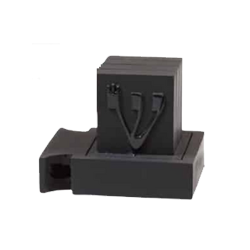Even in Nazi Germany, Jews marked the occasion of a Bar Mitzvah and observed the Mitzvah of Tefillin:
Yitzchak Wildstein- Berlin
…I reached the age of Bar Mitzva in 1940; in July 1940 I was thirteen years old. My Bar Mitzva celebration took place in the same synagogue, the “Heider-Rotter-Strasse”, where I sang in the choir…it was the largest Orthodox synagogue…it was in an area that the Nazis did not want or could not burn…but by then I had no family left at all…aside from my mother…she was the only member of our family that remained in Berlin beside me. The rabbi of the synagogue took it upon himself to teach me…the Portion of the Torah. I read the whole Portion of the Torah and also the chapter from the Prophets…
What Portion of the Torah did you read?
The Portion called “Balak”; and it was rare, in those times it was very rare, for a boy to celebrate his Bar Mitzva in the synagogue in Berlin , and it was even more unusual that the boy should actually read the entire Torah portion and the chapter from the Prophets, considering the situation as it was then. It was a wonderful experience for the Jews in the synagogue, and a source of great excitement for all. I recall that the Rabbi made a speech in the synagogue during the celebration. He blessed me and expressed his feelings that my Bar Mitzva was a “shternchen”, like a little star in the great darkness, yes, in that manner he expressed that this was a rare event in the great darkness of the times, that another Jewish child became a Bar Mitzva, that he read the whole Torah Portion, and that it was a most commendable of me.
Did you receive Tefillin?
Yes, yes, the Rabbi took care that I receive a pair of Tefillin, because, of course, I prayed at home every day. My home was a religious home, so of course, I received Tefillin. But another point in connection to the actual day of celebration- it was for me a very difficult day. I sat there that Shabbos all alone, because only my mother was there, and she of course sat in the women’s section.. There was no other relative around, and no friends, because all our friends, the men, were simply not around anymore. They had all been deported to concentration camps for the “OstYuden”, (Jews that had emigrated to Germany from Eastern European countries). Therefore I found myself sitting absolutely alone on the bench in the synagogue, waiting for my turn to be called up to the Torah as part of my Bar Mitzva. The only thing my mother could do for the celebration, considering the circumstances, was to bake some cakes which we served in the synagogue after the service was over, to the people who had come that Shabbos to pray. In other words, it was really a very, very sad Bar Mitzva, especially since I remembered my older brother’s Bar Mitzva in 1933 which had been a grand affair.
This was my Bar Mitzva in the early fall of 1940…
( From the Testimony of Wildstein, Yitzchak, Group 03, File 11878, Yad Vashem Archives)
Even in the concentration camps, Jews risked their very lives to fulfill this Mitzvah:
AUSHWITZ-BIRKENAU
In one of our meetings Rav Chaim Totter entered with an earth-shattering announcement: a pair of Tefillin and a prayer book had actually reached our Camp! With joy beaming from his face, Chaim told how he had actually seen with his own eyes the Tefillin in the hands of a Jewish Lithuanian youth who arrived yesterday to the Camp. It was hard to believe how this was possible. We all knew first-hand how many searches a prisoner goes through before he enters the Camp…And woe to him who tries to hide something in his hands. But Rav Chaim insisted and even swore that his words were true, so that there was not even a shadow of doubt that there was, in fact, a pair of Tefillin in our midst. The Novominsker Rav, Rabbi Yossele, may his blood be avenged, was the first to declare enthusiastically that tomorrow he would put on Tefillin!…
The next day, early, we gathered in front of Block 8 where the Rebbe waited for the youth who stood in the corner, adorned with the Tefillin, and praying fervently. The youth was Leibele, son of Reb Faivel from Kovna…
( Aviezer Burstein, “Zachor” Anthhology, # 7, Jerusalem, 1986, pp.32-33.

